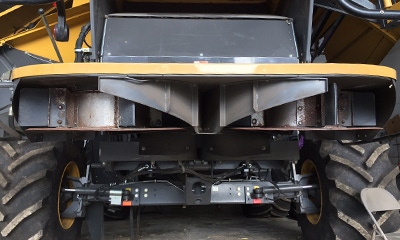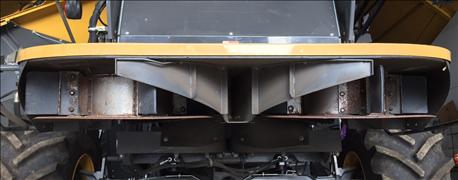
Don’t wait until winter to start preparing for no-tilling 2017 crops. Whether it will be your first time trying no-till or your 30th year no-tilling, one thing remains the same: Successful no-till starts with preparing for it this fall.
One of the ways to prepare involves setting up your combine so you spread residue evenly across each pass. This is particularly important when you’re combining soybeans and will be no-tilling corn into the field next spring.

HOW YOU SPREAD MATTERS: Set yourself up for successful no-tilling next spring by adjusting the combine so it spreads residue evenly this fall.
The Indiana Conservation Partnership has assembled information indicating why it’s important to spread residue evenly. Natural Resources Conservation Service personnel who contributed to this information include Don Donovan and Clint Harrison, district conservationists; Susannah Hinds, grazing specialist; Scot Haley, resource soil scientist; Kris Vance, public affairs specialist; Victor Shelton, state agronomist/grazing specialist; Tony Bailey, state conservation agronomist; and Shannon Zezula, state resource conservationist.
Get that residue spread
The key to successful no-till begins with the combine, Donovan insists. Successful no-till corn requires consistent soil moisture and temperature so every seed germinates in a short window of time after planting in the spring.
For consistent germination, soybean residue must be spread evenly at harvest, across the entire width of the head. With today’s 40-foot and wider heads, this can be challenging. Donovan has seen successful no-till farmers who use wide heads install postmarket units on their combines to ensure proper residue spreading.
If you cannot find a residue spreader unit that evenly distributes the residue as you combine, you may need to consider a smaller head. Do your research. Find the right tool for the job, and make sure your no-till corn will be successful by thinking about planting next spring when you harvest your soybeans in the fall.
About the Author(s)
You May Also Like




